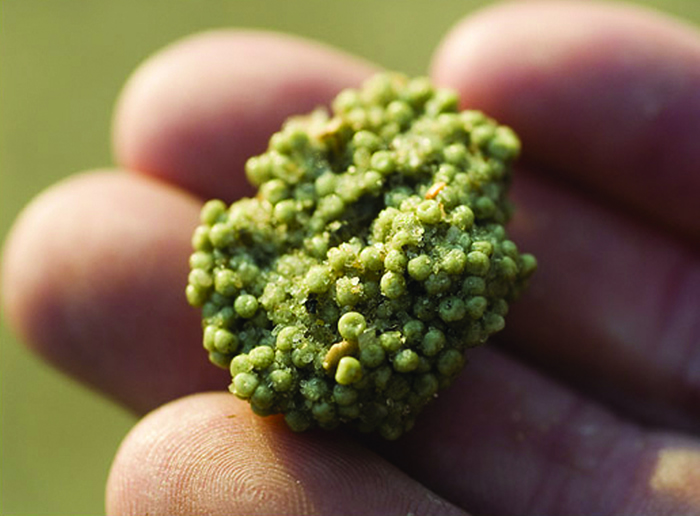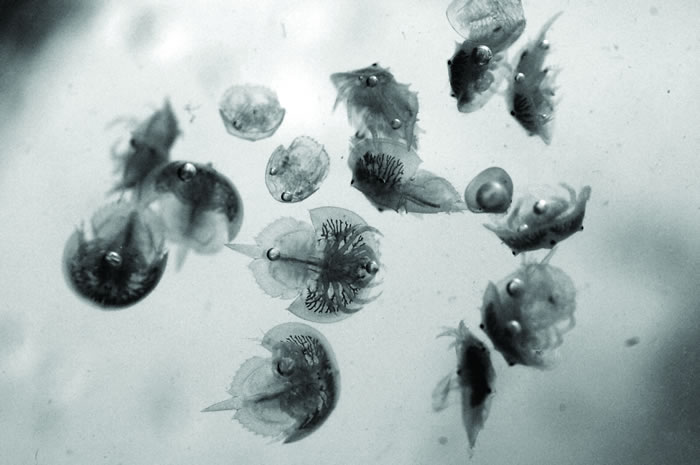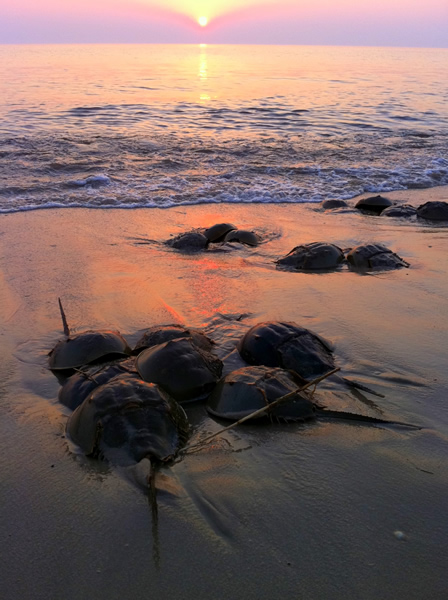Horseshoe crabs are “living fossils”, the last survivors of a group of organisms that first appeared in the fossil record some 350 million years ago. Delaware Bay has the largest population of horseshoe crabs (Limulus polyphemus) in the world.
Besides their extraordinary antiquity, horseshoe crabs are also of paramount importance to human health. Their blood contains a clotting agent, LAL (Limulus Amoebocyte Lysate), which provides a fast, reliable test for the presence of infectious bacteria in drugs, as well as prosthetic devices such as heart valves and hip replacements.
Since 1991, the Wetlands Institute has brought scientists and volunteer citizens together to conduct censuses of the ecologically vital horseshoe crab population on the New Jersey side of the Delaware Bay. These censuses take place during May and June and are central to our understanding and responsible management of this ancient marine creature.
Watch our new video and learn how we are working with partners and volunteers to save horseshoe crabs through our research and conservation efforts.
Related Pages:
Horseshoe Crab Conservation
The Horseshoe Crab, an important keystone species of the Delaware Bay, is an animal that is very much depended upon by many other species participating in the ecosystem. Shorebirds such as the Red Knot (Calidris canutus), Ruddy Turnstone (Arenaria interpres), and the Sanderling (Calidris alba) depend upon Horseshoe Crab eggs deposited along the banks of the Delaware Bay for their own nutritional welfare.

Unfortunately this natural phenomenon is in peril as the number of Horseshoe Crabs in the Delaware Bay has dramatically decreased over time.

In fact, the Delaware Bay’s Horseshoe Crab population has declined significantly, mostly due to overharvesting and habitat degredation. As the number of Horseshoe Crabs have decreased, so have the number of eggs available for consumption by migrating shorebirds. Shorebird population numbers are therefore plummeting as well, as many cannot gain the amount of energy needed to complete their migrations. The Red Knot has been placed on New Jersey’s Endangered Species list and many other shorebirds are in danger of being placed on that list if horseshoe crab populations are unable to rebound.

In an effort to address the Delaware Bay Horseshoe Crab situation, The Wetlands Institute has embarked on a statewide partnership project to support the stewardship and conservation of Horseshoe Crab populations in New Jersey. As part of this partnership, The Wetlands Institute collects fertilized Horseshoe Crab eggs with the proper permits from spawning beaches along the Delaware Bay and rears the eggs under controlled conditions in our aquarium. After about a month, eggs hatch and newly born Horseshoe Crabs are maintained in their culture tanks. Enclosed in this cultured environment and free of predation, aquaculture dramatically increases Horseshoe Crab survival both before and after the first molts. These small crabs are kept in culture tanks until they are ready to begin feeding, and then are released at their respective egg collection locations.
Click here to read an article published in the New York Times discussing the relationship between shorebirds and horseshoe crabs.

The Wetlands Institute is a leading partner in the multi-partner reTURN the Favor program. This program works to rescue overturned or impinged Horseshoe Crabs stranded on New Jersey’s Delaware Bay beaches. Though this program works to rescue Horseshoe Crabs on beaches open to the public, it primarily concentrates on rescuing crabs stranded on beach areas seasonally closed during shorebird migration and the Horseshoe Crab spawning season occurring in May and June.

